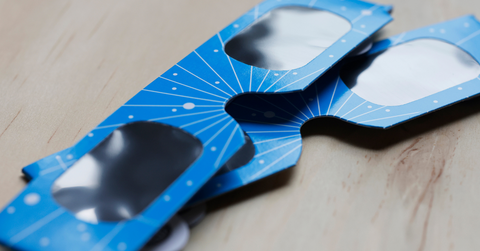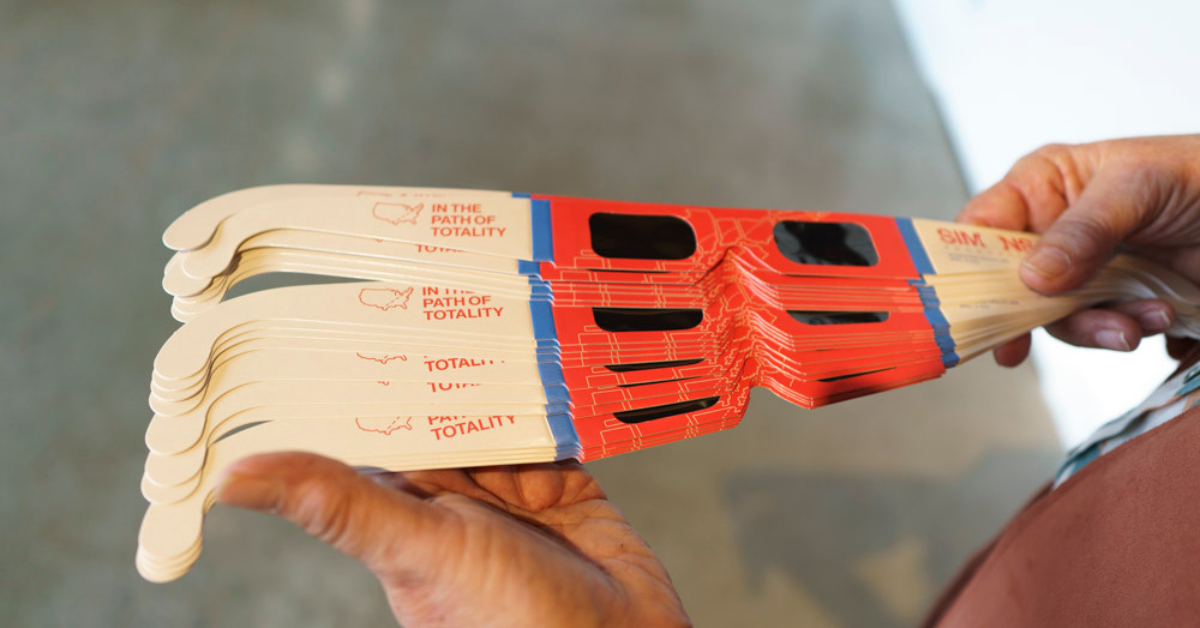How to Test Your Solar Eclipse Glasses Before the Next Celestial Event
Between home tests and safety codes, there are multiple ways to ensure that your solar eclipse glasses will keep your eyes safe.
Published April 5 2024, 12:34 p.m. ET

Getting to experience a solar eclipse can be an exciting time. Not only is the celestial event a rare one — there are only two to three partial solar eclipses each year, and only one total solar eclipse every two to three years — but it can be a once in a lifetime opportunity depending on where you live.
Because of that infrequency, many people end up buying new glasses for viewing the eclipse each time. But, not all glasses are as effective as you might think.
Using the wrong glasses, fake glasses, or no glasses at all can seriously damage your eyes, even though the sun will mostly be blocked out by the moon during the eclipse. That damage can have serious consequences, including temporary and permanent blindness, which is why it's important to make sure that your solar eclipse glasses are the real deal before you view the eclipse. Here's what you need to look out for.

Here's how to test solar eclipse glasses and make sure they are real.
There are several different ways to test your glasses, including checking for the International Organization for Standardization (ISO) number on the frame.
According to the American Astronomical Society, genuine solar eclipse glasses will come with an ISO, an international safety feature that indicates that the glasses can block harmful levels of UV and IR radiation. Real glasses will have ISO 12312-2 or ISO 12312-2:2015 somewhere on them.
Once you've verified that the ISO is on the level, you should look up information on the vendor where your glasses came from, double-checking that they are on the list of Reputable Vendors of Solar Filters and Viewers.
If they are, you should feel confident in knowing that you've gotten the real thing. If they are not, however, you may want to do your own experiment to test whether the glasses function like they're supposed to.
One way to do this is to take them outside and find a reflective surface to see the sun's reflection (note: you should never look directly at the sun while testing your glasses). The sun should appear dim through the glasses. Another way to test them is to take them into a dark room and turn on a regular lamp. If you can see the light from behind a lampshade, your glasses don't have what it takes to be used safely during the eclipse.
Fake solar eclipse glasses have been reported in some areas.
According to CNN, an unidentified Chinese manufacturer has been accused of selling fakes under the name of reputable solar eclipse eyewear producer Cangnan County Qiwei Craft Co. The outlet says that consumers may also come across similar faux glasses from the same manufacturer under the name Solar Eclipse International, Canada.
While this list of two allegedly counterfeit companies is not exhaustive, it is important to watch out for them... no pun intended.
Unfortunately, when it comes to something as delicate and important as your eyesight, it's necessary to take a few extra steps before viewing the solar eclipse. Otherwise, you risk having this rare celestial event become a memorial for a very unpleasant reason instead.